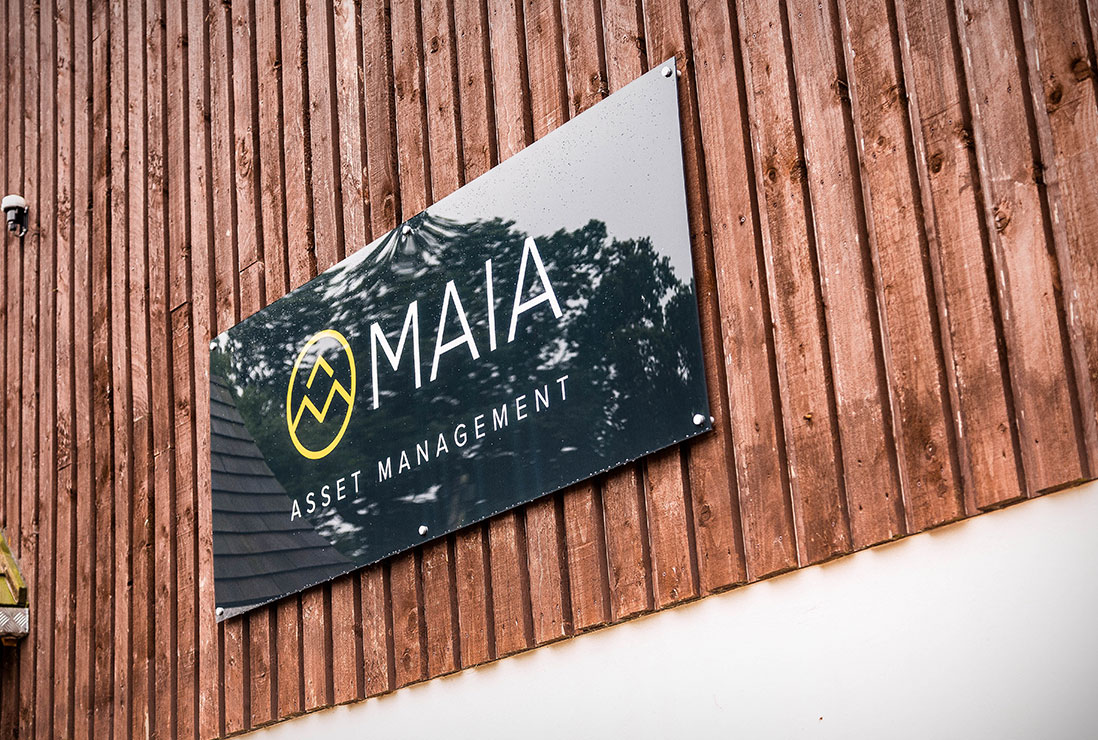Since the start of a year, higher inflation, changing central bank rhetoric, the Ukraine war and headwinds to growth and spending have caused markets to price in greater volatility.

The volatility (VIX) index has been spiking on a daily basis, while equity prices have fallen, and bond yields have risen. For investors this is a very tough environment to be in, as asset class correlations have increased as losses have occurred.
The investment team here at MAIA believe that the short-term headwinds regarding the war and inflation will reduce over time but will not fully dissipate. Global central banks will continue to focus on the inflation numbers and utilise all their tools to bring inflation down from its current highs. This provides investors with a different investment backdrop to what has been in place in recent years.
As most central banks were unwilling to tackle inflation when it started to increase moving out of 2020 and into 2021, they are now having to act more aggressively to bring headline numbers down from levels not seen since the 1970’s. The 1970’s were a very tough investment period as low growth was present with ultra-high inflation which ended up being present for longer than central banks and governments had hoped. This led to interest rates being increased significantly to try and curb the sticky inflation that was embedded. Investors are worried that we could be moving in that direction again.
There are some major differences between now and the 1970’s, over time, inflation should peak and move lower, but our expectations are that it will settle at a level higher than the average of the past few years.
Central banks are currently walking a tight rope of trying to not lose credibility, managing their economies, and reaching their dual mandates of lower inflation and a healthy jobs market. The market is concerned that a policy mistake may be on the cards, as managing inflation levels and interest rates is not an exact science.
The team believe that global growth will fall but the higher level of savings that consumers have should provide a better backdrop in a slowing growth environment than has been in place in previous slowdowns. Debt isn’t as much of a problem this time round.
Fiscal spending will continue due to climate change requirements and infrastructure spending in general. It is also a way for governments to increase growth and provide investment in their economies which is required post COVID. There are also positives from the reopening of global economies, people able to spend savings and businesses able to open and be fully functioning, with China being the last headwind in this area.
Slowing growth in China due to its zero COVID measures is an additional headwind. The Chinese economy is now more domestically orientated and therefore is becoming more of a consumer led economy rather than an export led economy. Unlike many western economies, China has far lower debt levels and is running surpluses on its current accounts. This provides more stability to the country and allows greater fiscal stimulus to be provided without causing major implications for the economy.
Asset allocation & positioning
We continue to run diversified portfolios with a focus on valuations and risk to return metrics for all investments. We concentrate on the assets we want to hold for the future and not what was best to hold in the past.
Currently the portfolios have an increased weighting to alternative assets. Our preferred options are gold, defined returns, and infrastructure. Whilst all have differing correlations to equities and fixed income, they also possess their own alpha opportunities due to the current or future macroeconomic conditions. The recent performance of the alternative holdings in our portfolios demonstrates the benefit of these asset classes.
Another asset class that we believe should provide a degree of protection in the current market environment is our allocation to fixed income. In general, we have been slightly underweight to fixed income as we believed yields were too low and spreads too tight. In the past few months, yields have increased dramatically especially in higher quality, long duration government debt. We think with the risks of inflation being pushed out even further, there is the danger that yields could go higher and spreads widen further still. We prefer to own shorter duration corporate credit and high yield debt as, where yields are higher, spreads have not widened as much, and duration is much lower.
Within equities we look for valuation discipline and areas where the risk to return profile is favourable not just for the long term, but across all time frames. We are currently overweight to the UK and have positive views on Europe as well. Our portfolios are currently positioned with a value style tilt as we think the lower valuations and income focus should work well in current market conditions
We also continue to be underweight to the US and technology compared to global benchmarks. We believe, due to their higher valuations, that these areas will come under further pressure in the short term. The sell off in the US, as well as long duration assets in general, could be described as over the top, however this should create opportunities for long term investors once volatility reduces. The indiscriminate selling across sectors and geographies is allowing stocks to be bought at levels not seen for years.
In conclusion
The blending of assets, geographies, styles, and sizes will be key to provide protection in the short term and the opportunity to outperform in the long term. We are very aware of the fact that the global economy is changing and so what has worked in the past may not work in the future.
We believe that our current allocation will work well over time. It may not fully protect from any downturns across asset classes; however, it is positioned in areas we think are better placed for now and the future. We also think that once this bout of volatility subsides, the portfolios are positioned in a way that will allow them to perform well in what will be a differing economic backdrop to what we have seen recently.
This website is aimed at Independent Financial Advisers, please tick the box to confirm that you are an IFA before entering the website.








